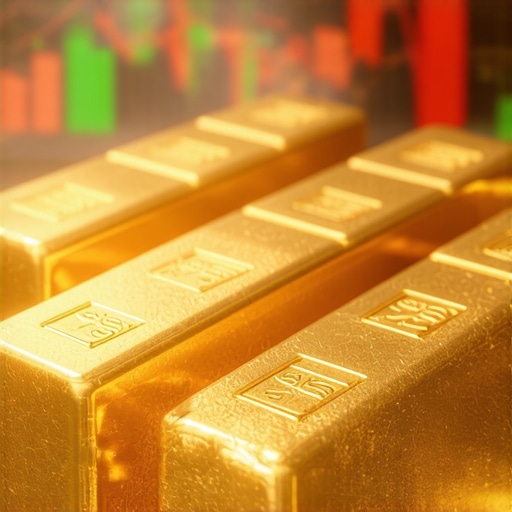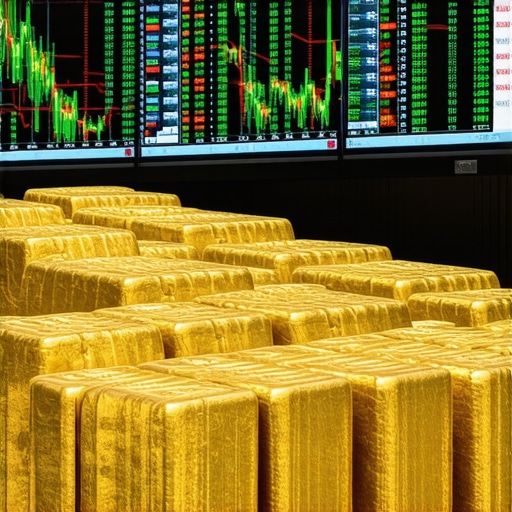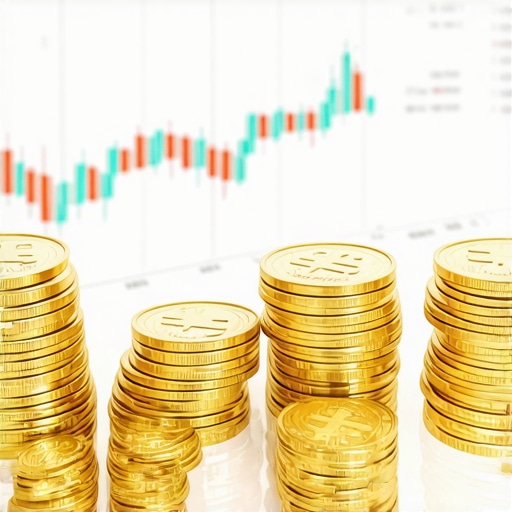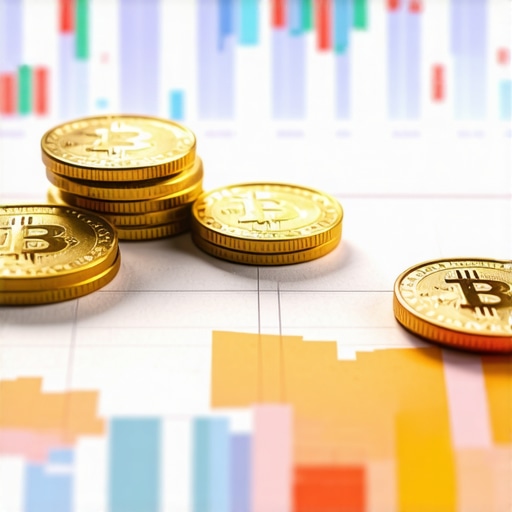Decoding the Future of Gold: An Expert’s Perspective on 2025 Market Dynamics
The gold market in 2025 stands at a crossroads shaped by intricate macroeconomic forces, geopolitical tensions, and evolving investor sentiments. As seasoned analysts, we recognize that understanding these complex interactions requires a nuanced approach that combines quantitative data with qualitative insights. This article delves into the key drivers influencing gold prices in 2025, offering a comprehensive analysis rooted in economic theory and market experience.
Macro-economic Forces and Inflation Trajectories
One of the most significant factors impacting gold’s future trajectory is the trajectory of global inflation. Experts assert that persistent inflationary pressures, driven by expansive fiscal policies and supply chain disruptions, will reinforce gold’s role as an effective inflation hedge. For instance, the relationship between inflation expectations and gold prices has historically demonstrated a strong correlation, as detailed in the recent white paper by the IMF.
Geopolitical Tensions and Safe-Haven Demand
In 2025, geopolitical unrest—particularly in key regions such as Eastern Europe and the Indo-Pacific—continues to elevate gold’s status as a safe-haven asset. Market participants expect that ongoing conflicts and diplomatic uncertainties will sustain demand for physical gold and gold-backed securities, thus underpinning price stability amidst volatility. The role of gold in geopolitical risk management is further reinforced by its historical resilience during crises, as outlined in the World Gold Council reports.
Technological Advancements and Gold Investment Vehicles
Technological innovation is transforming gold investing, with the proliferation of gold ETFs, digital gold, and blockchain-enabled trading platforms. These developments are expanding market access and liquidity, potentially amplifying gold’s price responsiveness to macroeconomic cues. As expert investors, we recommend monitoring these trends for strategic positioning, especially considering the broader shift toward digital assets in 2025.
Complexities of USD Movements and Commodity Interplay
Another layer of complexity is added by fluctuations in the US dollar index, which inversely correlates with gold prices. A weakening dollar, driven by monetary policy shifts and fiscal deficits, tends to bolster gold’s appeal. Simultaneously, the interplay with other commodities, notably silver and platinum, offers additional insights into the broader precious metals market. For an in-depth understanding, explore our analysis of gold versus stocks.
What advanced strategies can investors employ to hedge against unforeseen geopolitical shocks impacting gold prices in 2025?
Investors should consider diversified gold portfolios, including physical bullion, ETFs, and gold mining stocks, complemented by dynamic hedging techniques such as options. Staying informed of geopolitical developments via expert analyses and maintaining liquidity reserves are crucial. For strategic guidance, see our comprehensive guide on building a gold IRA.
To deepen your understanding of these complex factors, explore additional expert content on global economic factors shaping gold’s future. Engaging with these insights will position investors to navigate the nuanced landscape of 2025’s gold market with confidence.
Leveraging Strategic Diversification in Gold Portfolios for 2025
As market dynamics become increasingly complex, sophisticated investors recognize the importance of diversifying their gold holdings across various instruments. Physical gold, such as coins and bars, offers tangible security, while gold ETFs and mining stocks provide liquidity and growth potential. Integrating these assets into a balanced portfolio can mitigate risks associated with geopolitical shocks and macroeconomic fluctuations. For instance, combining physical gold with mining stocks can capitalize on potential surges driven by increased metal demand, as discussed in our analysis of gold demand trends.
Harnessing the Power of Quantitative Models to Forecast Gold Price Volatility in 2025
As we step further into 2025, the complexity of gold market dynamics demands investors and analysts employ sophisticated quantitative models to anticipate price movements. Leveraging machine learning algorithms, such as random forests and neural networks, can help decode non-linear relationships between macroeconomic indicators and gold prices. For instance, recent research published in the PLoS ONE highlights the efficacy of deep learning in financial forecasting, emphasizing its application in precious metals markets.
What are the limitations of relying solely on quantitative models for gold price predictions?
While these models excel at capturing complex patterns, they are inherently dependent on the quality and scope of input data. Overfitting to historical data can lead to poor predictive performance in unprecedented scenarios, such as sudden geopolitical shocks or black swan events. Therefore, integrating qualitative assessments from geopolitical analysts and macroeconomic experts remains essential for balanced decision-making. For comprehensive insights, consult the study by the IMF on monetary policy impacts.
Innovative Hedging Techniques to Counteract Unexpected Gold Price Swings
Advanced investors are increasingly utilizing derivative instruments beyond traditional options, such as structured products and volatility swaps, to hedge against unpredictable fluctuations. For example, structured gold notes, which combine options with fixed-income securities, can provide downside protection while maintaining upside exposure. Moreover, dynamic hedging strategies that adjust in real-time to market signals are gaining popularity. Resources like the CME Group offer detailed tools and tutorials for implementing these sophisticated strategies.
How can investors effectively balance risk and reward when deploying complex hedging instruments?
Effective balancing requires a thorough understanding of the instruments’ risk profiles and correlations with other portfolio assets. Regularly stress-testing these strategies under various market scenarios ensures resilience. Additionally, maintaining a liquidity reserve is crucial to capitalize on emerging opportunities or to cover margin calls during volatile periods. For expert guidance, consider engaging with a financial advisor specializing in commodities derivatives.
The Role of Blockchain and Digital Gold in Enhancing Market Transparency
Emerging blockchain technologies are revolutionizing gold trading by providing immutable transaction records and enhancing transparency. Digital gold platforms, backed by physical reserves, facilitate fractional ownership and seamless transactions, broadening access for retail investors. These innovations not only democratize gold investment but also introduce new layers of liquidity and security, reducing counterparty risk. For example, the Digital Gold Institute reports showcase case studies demonstrating increased market efficiency through blockchain adoption.
< >
>
Integrating blockchain-based gold trading platforms can significantly mitigate traditional issues related to authenticity and settlement times, thus fostering a more resilient market environment.
Harnessing Quantitative and Qualitative Synergy for Gold Price Forecasting in 2025
In the rapidly evolving landscape of precious metals, blending sophisticated quantitative models with nuanced qualitative insights offers investors a formidable advantage. While machine learning algorithms like neural networks excel at detecting complex patterns, expert geopolitical and macroeconomic assessments provide contextual depth that models alone cannot replicate. This integrated approach enhances predictive accuracy, enabling investors to anticipate gold price shifts driven by unforeseen global events.
Emerging Blockchain Innovations Reshaping Gold Market Transparency and Security
Blockchain technology is catalyzing a paradigm shift in gold trading by ensuring tamper-proof transaction records and fostering trust among market participants. Digital gold platforms, which utilize blockchain to verify authenticity and facilitate fractional ownership, are democratizing access and increasing liquidity. This technological leap not only mitigates traditional risks such as counterfeiting but also streamlines settlement processes, creating a more resilient and transparent market infrastructure.
Expert-Recommended Hedging Techniques for Navigating Market Turbulence
Advanced investors are now deploying a suite of sophisticated hedging instruments, including structured products integrating options, volatility swaps, and dynamic risk management algorithms. These tools allow for precise risk mitigation during periods of heightened volatility, such as geopolitical crises or sudden macroeconomic shifts. Maintaining agility with real-time adjustments and stress-testing strategies under various scenarios are crucial to balancing risk and reward effectively.
What Role Will Digital Gold and Blockchain Play in Shaping Future Investment Portfolios?
Digital gold, backed by secure blockchain protocols, promises to revolutionize portfolio diversification by offering fractional ownership, ease of transfer, and enhanced security. As these platforms mature, they will likely become integral components of sophisticated investment strategies, providing liquidity and transparency previously unavailable in traditional gold markets. For investors seeking to leverage these innovations, exploring reputable platforms and understanding their regulatory environments is essential.
Expert Guidance for Integrating Complex Strategies into Your Gold Portfolio
To excel in 2025 and beyond, investors should consider a multi-layered approach that combines physical holdings, digital assets, and derivative instruments. Collaborating with financial advisors specializing in commodities and blockchain technologies can optimize portfolio resilience. Continual education on emerging trends and regulatory developments will empower investors to adapt swiftly to market changes and technological advancements.

Visualize the future landscape of gold investing with an illustrative diagram of blockchain integration and digital gold platforms transforming traditional markets.
Expert Insights & Advanced Considerations
Market Diversification Enhances Resilience
Senior analysts emphasize that diversifying gold investments across physical bullion, ETFs, and mining stocks mitigates risks associated with macroeconomic shifts and geopolitical upheavals. A multi-layered portfolio enables strategic flexibility and resilience in unpredictable markets.
Leveraging Quantitative Models for Precision
Advanced investors utilize machine learning algorithms, such as neural networks, to decode complex relationships between macroeconomic indicators and gold prices. These models, when combined with qualitative geopolitical insights, provide a comprehensive forecasting framework.
Blockchain and Digital Gold as Market Game-Changers
Blockchain technology is revolutionizing gold trading by enhancing transparency, security, and accessibility. Digital gold platforms backed by blockchain facilitate fractional ownership and streamline transactions, broadening market participation and trust.
Innovative Hedging Strategies for Market Volatility
Sophisticated investors deploy structured products, volatility swaps, and real-time dynamic hedging techniques to manage risk. Regular stress-testing and maintaining liquidity reserves are crucial for balancing risk and reward in turbulent times.
Curated Expert Resources
- World Gold Council Research: An authoritative source providing comprehensive market analysis and insights into gold demand and supply dynamics.
- IMF Working Papers: Offer in-depth evaluations of macroeconomic policies and their impacts on gold pricing, essential for strategic decision-making.
- PLoS ONE Financial Modeling Studies: Present cutting-edge research on machine learning applications in financial forecasting, vital for quantitative analysis.
- CME Group Derivative Tools: Provide advanced instruments and tutorials for implementing sophisticated hedging strategies.
- Digital Gold Institute Reports: Showcase innovations in blockchain-based gold trading, ensuring transparency and security in digital assets.
Final Expert Perspective
The 2025 gold market demands a nuanced approach that blends expert-level quantitative modeling with qualitative geopolitical and macroeconomic assessments. Staying ahead involves strategic diversification, leveraging technological innovations like blockchain, and employing sophisticated hedging techniques. For investors committed to long-term growth and risk management, integrating these advanced insights and resources will be essential. Engage actively with ongoing research and expert analyses to refine your investment strategies and capitalize on emerging opportunities in this evolving landscape.










